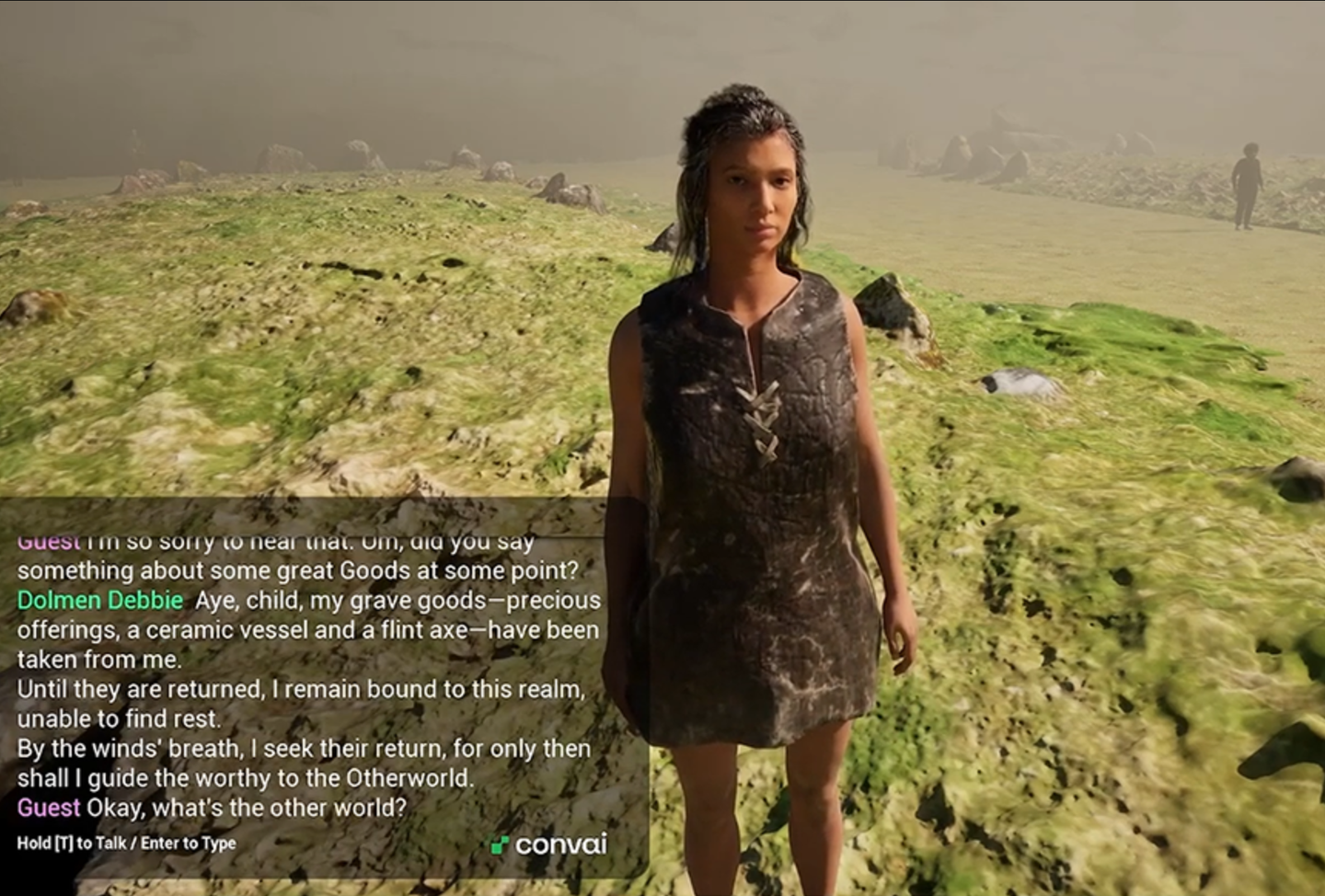Researchers improve scientific experiments through backwards time travel simulations
Researchers have illuminated the potential of using simulated models of time travel to solve complex issues that conventional physics cannot

[Oct. 18, 2023: Staff Writer, The Brighter Side of News]
Researchers have illuminated the potential of using simulated models of time travel to solve complex issues that conventional physics cannot. (CREDIT: Creative Commons)
In a groundbreaking study that intersects the realms of theoretical physics and practical problem-solving, researchers at the University of Cambridge have illuminated the potential of using simulated models of time travel to solve complex issues that conventional physics finds insurmountable.
This pioneering research, primarily focusing on quantum entanglement manipulation, presents a framework that could exponentially elevate the success rates in various fields, including gambling, investment, and particularly quantum experimentation.
The study, published in the esteemed journal Physical Review Letters, explores the provocative concept of particles traveling back in time. It delves into the controversial and largely theoretical domain of spacetime loops and their potential behavior, connecting these advanced theories to the practical field of quantum metrology.
This connection is pivotal, as quantum metrology involves the application of quantum theory to make ultra-precise measurements, an aspect crucial to many scientific and commercial applications.
Related Stories
At the heart of this research is quantum entanglement, a fundamental principle of quantum theory where particles become intertwined in such a way that the state of one instantly influences the state of the other, regardless of the distance separating them.
This phenomenon, elusive in the macroscopic world governed by classical physics, is a cornerstone in the emerging field of quantum computing. Here, the power of entangled particles is harnessed to perform computations that are currently beyond the reach of classical computers' capabilities.
David Arvidsson-Shukur, the lead author of the study from the Cambridge Hitachi Laboratory, elucidates this complex concept through a simple analogy: “Imagine that you want to send a gift to someone: you need to send it on day one to make sure it arrives on day three. However, you only receive that person’s wish list on day two. So, in this chronology-respecting scenario, it’s impossible for you to know in advance what they will want as a gift and to make sure you send the right one."
Examples of chronology-violating particles traversing hypothetical CTCs. ρcv denotes such particles’ states. Time t, experienced by a chronology-respecting observer, runs from bottom to top. The time-traveling particle experiences time T. (CREDIT: APS Journal).
He continues, “Now imagine you can change what you send on day one with the information from the wish list received on day two. Our simulation uses quantum entanglement manipulation to show how you could retroactively change your previous actions to ensure the final outcome is the one you want.”
This revolutionary idea suggests that, through the manipulation of quantum entanglement, one could effectively influence past events, adjusting them based on future outcomes or insights. Essentially, it's a theoretical model of time travel within the quantum realm, with practical implications that could transcend the boundaries of science fiction.
Circuit diagrams for (a) standard and (b) PCTC-powered weak-value amplification. Time progresses in the laboratory’s rest frame as one proceeds upward along the central, vertical axis. Black lines represent qubits. Dashed gray lines represent classical information. (CREDIT: APS Journal).
Nicole Yunger Halpern, a co-author of the study and a researcher at the National Institute of Standards and Technology (NIST) and the University of Maryland, describes the process: “In our proposal, an experimentalist entangles two particles. The first particle is then sent to be used in an experiment. Upon gaining new information, the experimentalist manipulates the second particle to effectively alter the first particle’s past state, changing the outcome of the experiment.”
However, this astounding effect is not without its limitations. Arvidsson-Shukur points out, “The effect is remarkable, but it happens only one time out of four! In other words, the simulation has a 75% chance of failure. But the good news is that you know if you have failed. If we stay with our gift analogy, one out of four times, the gift will be the desired one (for example, a pair of trousers), another time it will be a pair of trousers but in the wrong size, or the wrong color, or it will be a jacket.”
Researchers linked their concept to quantum metrology. (CREDIT: APS Journal)
To transcend these odds and make their theoretical model applicable to real-world technology, the researchers linked their concept to quantum metrology. This field often involves experiments where photons (minute particles of light) are projected onto a sample of interest for examination, then captured by a specialized camera. The efficiency of such experiments hinges on the initial preparation of the photons before they encounter the sample. The researchers posited that even if the optimal method of photon preparation is determined after the photons have already interacted with the sample, simulations of time travel could be utilized to retroactively modify the original photons.
The team proposes compensating for the high probability of failure by deploying an immense number of entangled photons, in anticipation that some will ultimately transmit the correct, updated information. A filter would then be employed to ascertain that only the appropriate photons are relayed to the camera, while the others, deemed 'bad' photons, are discarded.
Aidan McConnell, a co-author of the study, elaborates on this using the established gift analogy: “Let’s say sending gifts is inexpensive and we can send numerous parcels on day one. On day two, we know which gift we should have sent. By the time the parcels arrive on day three, one out of every four gifts will be correct, and we select these by telling the recipient which deliveries to throw away.”
The necessity of using a filter to sift through the photons and ensure the success of their experiment is a point of reassurance, according to Arvidsson-Shukur. He reflects, “The world would be very strange if our time-travel simulation worked every time. Relativity and all the theories that we are building our understanding of the universe on would be out of the window."
This research does not aim to propose a literal time machine, but rather, it represents an in-depth exploration into the foundational principles of quantum mechanics. While the simulations do not permit a journey back to alter one's past, they provide a mechanism to amend the present by addressing past issues, thus paving the way for a more favorable future.
The implications of this study are vast, spanning from enhancing computational methods to potentially revolutionizing decision-making processes in various sectors like finance, gambling, and scientific research. The ability to retroactively select the optimal solution based on outcomes that have not yet occurred could be a game-changer in these fields, providing a significant advantage where success often hinges on predictive accuracy.
This trailblazing work has garnered support from numerous prestigious organizations, including the Sweden-America Foundation, the Lars Hierta Memorial Foundation, Girton College, and the Engineering and Physical Sciences Research Council (EPSRC), under UK Research and Innovation (UKRI).
The study's findings underscore the continual evolution of our understanding of quantum mechanics and highlight the potential for theoretical physics to drive tangible advancements in technology and problem-solving methodologies.
While the concept of time travel remains a contentious topic among physicists, the research conducted by the team at the University of Cambridge offers a compelling glimpse into how quantum mechanics can be maneuvered to simulate backward time travel, potentially unlocking unprecedented solutions to challenges that are currently deemed impossible.
This venture into the manipulation of quantum entanglement not only broadens our comprehension of the quantum realm but also beckons a future where the boundaries between science fiction and reality may become increasingly blurred.
Note: Materials provided above by The Brighter Side of News. Content may be edited for style and length.
Like these kind of feel good stories? Get the Brighter Side of News' newsletter.



